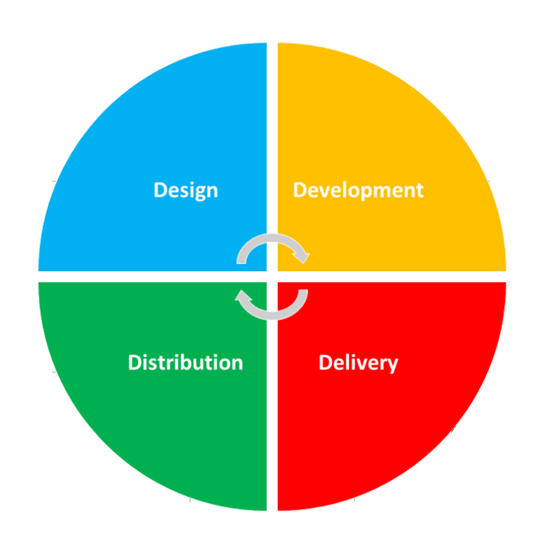Release

First phase: Design
Design quality is the first step necessary to get quality finished product. For this reason, the design process of the functions to be implemented is rather complex. It starts from the explicit writing of all the specific requirements, moves from the visual definition of the sketches of all the functional pages provided and ends with the writing in the 4D+ system of all the single specifications to be implemented. The Design activity is completed when the Design Manager will include a group of specifications within a release. Therefore, the Design Phase is declared closed and the Development Phase is launched.
Second phase: Development
The development is managed by the designated "Development Managers" that subdivide the specifications provided in the branch and have them implemented by the Developers. Each time a branch is completed, it is sent to the Delivery manager who will start next test phase. This type of work organization will allow to gradually carry out the test on partial releases, in order to identify any mistakes or incongruity far in advance.
Third phase: Delivery
The testing activity is managed by the "Delivery manager" who is responsible for the quality instance on which all the test and documentation activities take place from this point onwards. The test is carried out by performing the test cases deriving from the specifications entered into the system. If the test is negative, after the Delivery manager check, the code is taken by the developers to fix the detected non-conformities and resolve any anomalies.
Instead, if the first test is positive, the workflow provides the writing/updating of the documentation (online help) in the first language, the subsequent check in the second language (Italian) and the translation of the documentation already issued.
Fourth phase: Distribution
The Distribution phase consists in the installation of the new release on existing instances. Each instance has its own manager: the Instance Manager. All the activity is coordinated by the Distribution Manager who also performs the analysis of the incident reports that are transmitted to him by the persons responsible of the instances. The activity of the Distribution manager is particularly important because it aggregates and certifies the feedback that will be provided by him to the Design Manager for the continuous improvement of the interface, functions and performances of Panoptikon.
